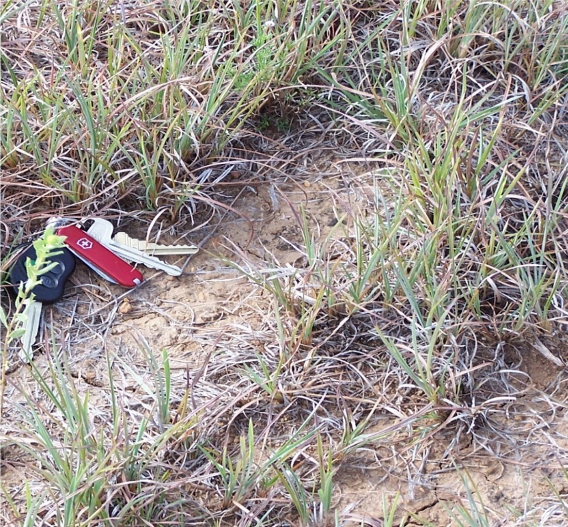Richard Teague, from Rangeland, Wildlife and Fisheries Management, Texas A&M University, discusses sustainable agroecosystems
Carbon rich soil is healthy and beneficial for the entire ecosystem, based on previous and growing research. Ecosystem health is increased as soil carbon increases, resulting in improved water infiltration and retention; soil stability nutrient status, access and retention; diversity of fungi, microbes, plants, and insects; wildlife diversity, nutrition and habitat; livestock health and output; and farmer net profits, resilience and well-being. Healthy ecosystems with high levels of soil carbon and soil microbial biomass, diversity and function provide valuable ecosystem services (benefits humans gain from nature), which increase the sustainability of farming, enhance natural pest control, boost yields, and reduce costs, thereby increasing profitability.

However, many traditional agricultural practices damage the very ecosystems on which they rely to function optimally. Intensive farming methods, such as extensive soil ploughing, inorganic fertiliser and pesticide use, damage fragile ecosystems over time, reducing yields, and thus often prompting even more intensive farming. This ultimately leads to land that is damaged beyond repair and no longer suitable for grazing or cropping farming.

During the 2013 United Nations year of soil, global soil scientists warned that if the current intensive industrial agricultural practices were continued, there will be no functional soil left in around 60 years. In the best-case scenario, this means a change in the food we have available to us; in the worst-case scenario, this would mean insufficient food to go around. As dire as this warning is we can take confidence in the many farmers who are using management practices that have been shown to improve and regenerate soil health, decrease costs and improve profitability while regenerating degraded ecosystem function and delivering enhanced ecosystem services essential to our health and wellbeing.

To achieve desired economic goals, regenerative grazing farmers manage specifically to optimise four key ecosystem functions:
1) maximise energy capture via photosynthesis to drive ecosystem function,
2) maximise capture of incoming precipitation, retention in the soil and cycling through plants,
3) maximise nutrient cycling through plants and soil to facilitate biotic function and productivity,
4) create and maintain high biodiversity below and above ground to increase ecosystem stability and productivity.
The biggest limiting factor in grazing and cropping agriculture is not the amount of rain that falls but the amount that stays in the soil. Soil microbes control 90% of soil and ecosystem function so management must enhance not degrade soil microbial biodiversity and function. Regenerative farmers must manage to mimic the evolved ecosystem functions of native grasslands and savannas. Soil microbial and associated plant communities in grazing ecosystems did not evolve under abandonment, but coevolved as complex, dynamic ecosystems comprising grasses and soil biota, grazers, and their predators.
The grazing used to mimic these elements involves avoiding over-stocking and over-grazing by using adaptive multi-paddock (AMP) grazing. Although AMP grazing supports heavier stocking, this is not intensive grazing but intensive management of grazing. Overstocking is avoided with holistic planned grazing management by ensuring that livestock numbers do not exceed the amount of forage available, ensuring maintenance of essential ecosystem functions. Overgrazing is avoided by having short grazing periods followed by adequate recovery after grazing. In combination, these actions result in light to moderate grazing impact on the soil, herbaceous vegetation and ecological functions.
The principles for increasing microbial function to improve soil health and carbon in grazing ecosystems involves managing to achieve the following:
1) improve plant cover,
2) minimise bare ground,
3) manage for perennial plants rather than annuals,
4) manage for most productive plants,
5) leave adequate plant residue,
6) manage for living roots and green leaves for as many days each year as possible,
7) avoid tillage, inorganic fertilisers & biocides.
Our published fieldwork indicates that AMP grazing provides several positive outcomes relative to both moderate continuous (MC) and heavy continuous (HC) grazing and non-grazed enclosures (EX).


These include:
1) Increased soil organic matter and fungal to bacterial ratio associated with superior water-holding capacity and nutrient availability and retention;
2) Increased late-seral tall grass species composition that are the most productive in this ecosystem and are known to be obligate mycotrophs;
3) Increased productivity relative to continuous grazing;
4) Increased herbaceous biodiversity compared to non-grazed enclosures;
5) Decreased bare ground with AMP that decreases soil temperature since bare ground for AMP was less (1%) than with HC (30%) and with MC (4%;);
6) Improved soil physical values with AMP relative to continuous grazing (HC) at the same stocking rate with: bulk density (0.91 vs. 1.06 g cm-3); aggregate stability (93% vs. 81%); penetration resistance (174 vs. 246 Joules); sediment loss (4.0 vs. 18.0 g m-2); and soil moisture (25% vs. 15% by volume); and
7) Improved water catchment hydrologic responses with AMP grazing management to be comparable to non-grazed areas, and superior to MC and HC grazing, indicating that AMP grazing practices maintain pastures at near natural conditions.
Our research in many locations through North America shows that:
1) AMP grazing is less sensitive to overstocking than continuous grazing,
2) as number of paddocks per herd is increased, stocking rates can be increased without damaging ecological function,
3) AMP advantages over continuous grazing are more important as stock numbers increase,
4) short grazing periods of 1 to 3 days followed by adequate recovery from grazing (usually 50 to 90 or more days depending on region) is made possible using > 30 paddocks per herd allow higher stocking rates, giving higher net returns, lower income variability, regeneration of ecological function, and resource restoration over a range of management scenarios.
We have achieved these results by conducting our research at the commercial ranch scale to include spatial effects, allow sufficient time under different grazing treatments to manifest biological changes that are slow in these low rainfall ecosystems. Additionally, adaptive management was used by people with a proven record of successful outcomes to achieve the best possible ecological and economic outcomes for each respective grazing treatment to succeed under constantly varying conditions.
We posit that research to achieve adequate understanding of the management that most successfully achieves ecological function restoration to improve economic outcomes needs to be conducted; at the commercial ranch scale, on appropriately managed ranches to include: the impacts of scale, time taken for changes to be measurable, inclusion of top quality, adaptive management, and inclusion of management options to achieve desired outcomes.
Scientists that have not worked within these guidelines have not achieved the beneficial results we have by using this research framework.
*Please note: This is a commercial profile











